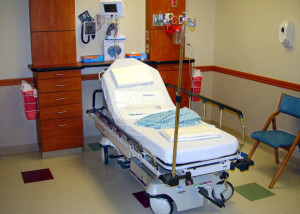In the past couple of decades, total knee and total hip replacement surgeries have become the two most common surgical procedures in the United States, with more than 600,000 operations and more than 300,000 operations respectively being performed each year. One of the reasons for the increase in the number of patients having a total joint replacement is that more young people are choosing to undergo procedures.
 There are a variety of reasons more young people are choosing to having a total hip or total knee replacement. In years past, these operations were primarily for the elderly, because, when someone can no longer stay mobile, there tends to be a significant reduction in both quality of life and the years a person will live. However, a traditional artificial hip is rated to last between 10 and 20 years on the high end, so if they give the implant to a younger person, they will likely need a second or even third operation at some point in their lives.
There are a variety of reasons more young people are choosing to having a total hip or total knee replacement. In years past, these operations were primarily for the elderly, because, when someone can no longer stay mobile, there tends to be a significant reduction in both quality of life and the years a person will live. However, a traditional artificial hip is rated to last between 10 and 20 years on the high end, so if they give the implant to a younger person, they will likely need a second or even third operation at some point in their lives.
If you have had a total hip replacement and are having problems to the point where you need the implant replaced, and it has been less than 10 years, you should contact a Boston hip replacement injury attorney to see if you have a valid claim. We have seen many defectively designed artificial joints that have failed due to defects, causing the patients to experience considerable pain and suffering.
One the reasons younger people are good candidates for having a total joint replacement is because, following the operation, they will be able to lead a more active lifestyle, as they were able to do before their joint disease progressed so much. However, this limitation on the lifespan of an implant is a major impediment to having the surgery at a younger age.
According to a recent news article from CBS News, robots are now able to make longer lasting hip and knee replacement operations more feasible for younger patients. The article features and interview with a first responder from NYFD’s Ladder 6 company who was in the North Tower on 9/11. He recalled that, as they were getting people to safety, the stairwell he was in started to shift, and he was trapped under the wreckage. While he was able to work, his hip degraded very quickly, and he needed to have both hips replaced.
He was able to use a robot to perform the placement and insertion of both hips in what turned out to be a bilateral hip replacement surgery, and now he is able to walk more than three miles a day with the hips expecting to last in excess of 20 years. This is major improvement of what we had seen in the past, and that is good news for younger patients.
While there is some debate over whether or not it is worth having a bilateral operation (both knees or hips at the same time), some doctors prefer the operation, since it is only a single time under anesthesia, and the recovery time is shortened compared to two separate operations.
Call the Boston Jeffrey Glassman Injury Lawyers for a free and confidential appointment — (617) 777-7777.
Additional Resources:
Robots Make Long-Lasting Hip, Knee Replacement A Possibility For Young Patients, October 31, 2016, CBS News
More Blog Entries:
FDA Announces Testosterone Meds Must Carry Broader Warning, July 7, 2014, Boston Products Liability Lawyers Blog
 Product Liability Lawyer Blog
Product Liability Lawyer Blog

